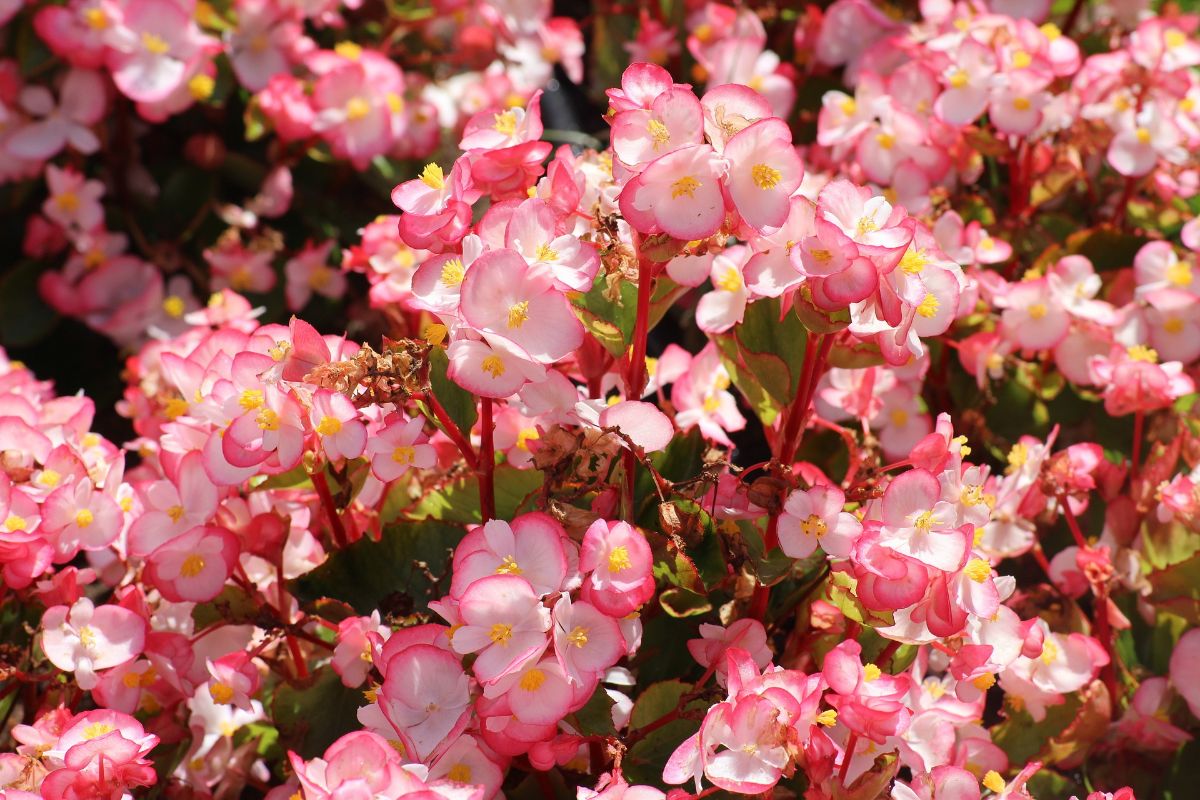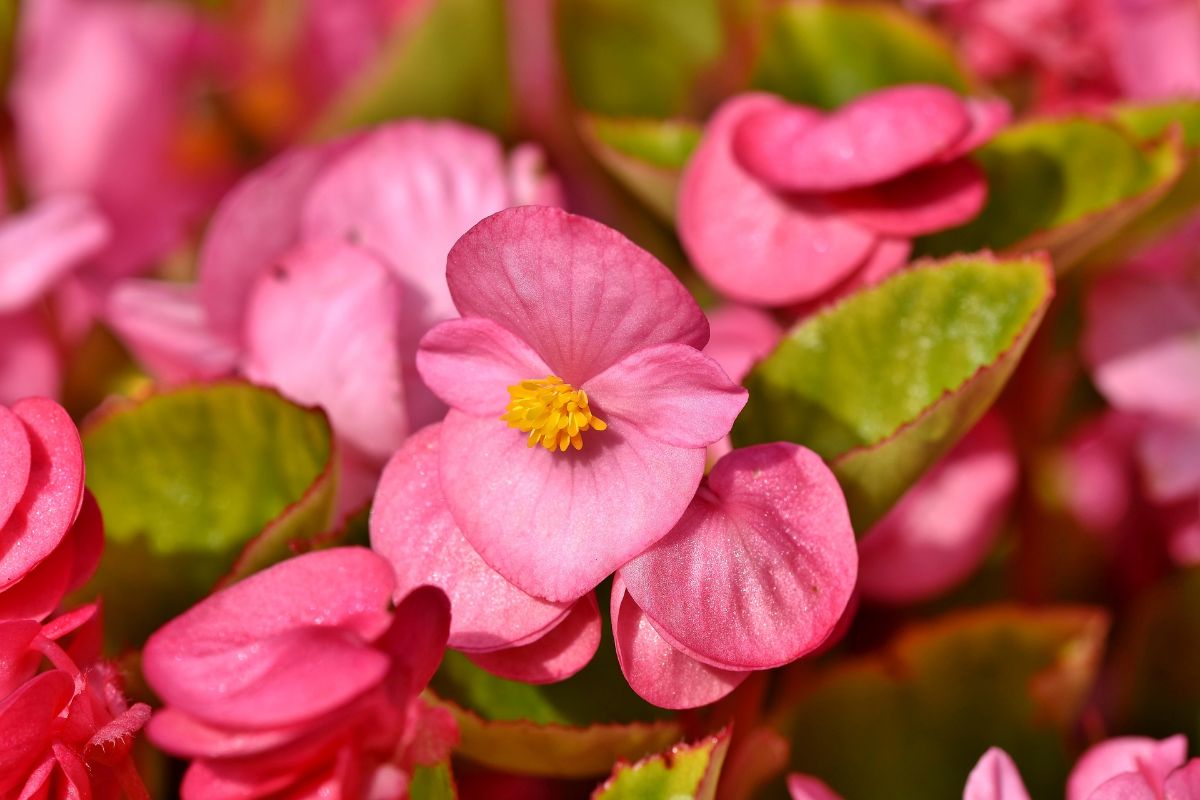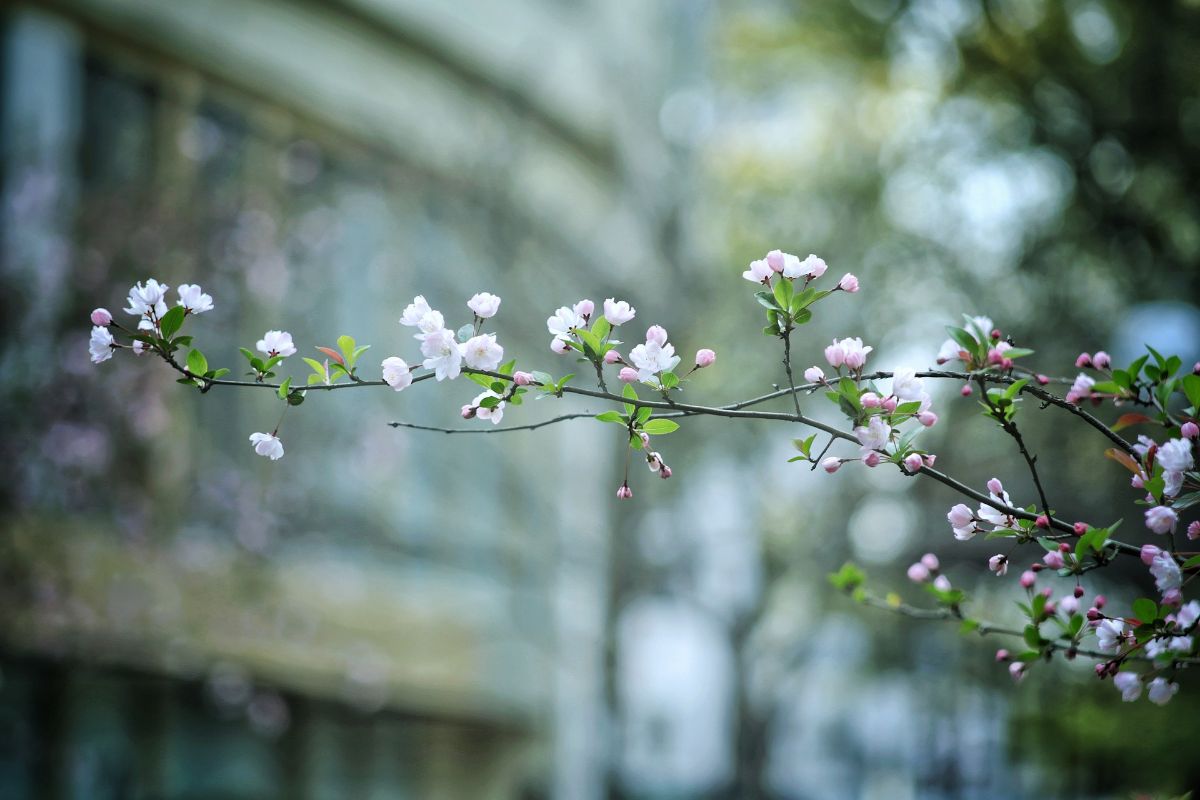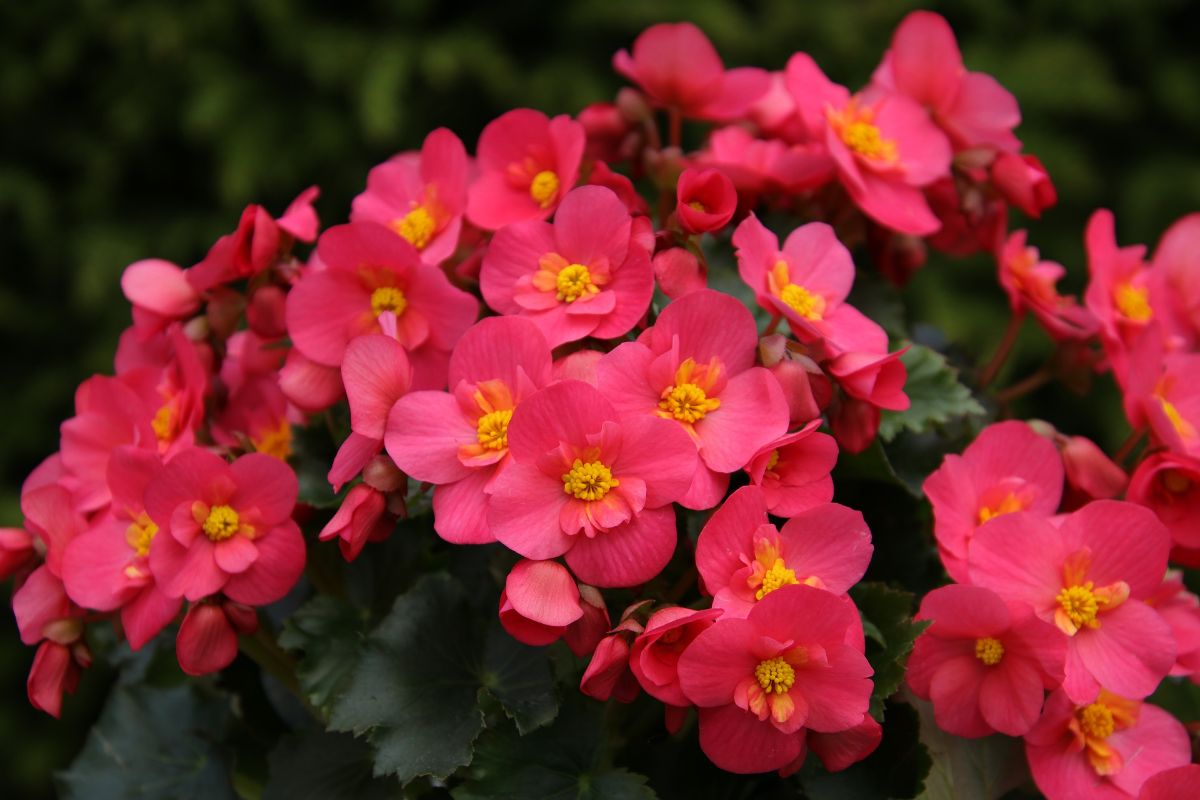
There is no doubt that begonias are one of the most beautiful plants because of their colorful flowers. It is for this reason that they attract so many looks. But also the facility to adapt to the exterior or to be begonias of interior means that we can enjoy this plant as we want
But, if you want to keep it at home and keep it healthy, the first thing you need is to know what are the main cares that you must provide if you have it in a pot inside the house. And we can help you with that.
How are begonias

Before giving you the care you need, you should know that in the world there are 1500 species of begonias. However, of all of them, only 150 are the most common for gardens and indoors.
Those 150 can be divided into three groups:
- Rhizomatous. Which are those that have a stem inside the earth that serves as a reserve store. These would be Imperialis, Rexo hispidas.
- Tuberous. They are the ones that have the roots in a tuber. The most common are Pearcei, Elatior or Evasianas.
- Fasciculated. They are the ones that have not only the main root, but also other secondary ones. For example, semperflorens, venosa or incanas.
Why are we talking to you about this? Well, each group of begonias usually has some specific needs, either temperature or irrigation, and you should know what type of begonia you have to provide the necessary care depending on your group.
Indoor Begonia Care

Really the begonias They adapt to living both outdoors and indoors. that's why it's difficult to tell you which species of the 150 are better (or need) to be indoors. But below we give you the care they need according to their needs (and type of plant).
Location
The begonia is both an indoor and outdoor plant, which means that it adapts to everything as long as you meet its needs.
Of course, when placing it, in the case of indoor begonias, you must choose a bright place where it can receive sunlight but filtered. It is not necessary to spend many hours in the sun, because it prefers a small amount.
The best? Find a location where you can catch the early morning sunlight. Only with that, and keeping it in a bright place, it will be happy.
Temperature
This is where we have to take care of ourselves the most. While you can provide you with a temperature of more than 18 degrees Celsius will be comfortable. His ideal of her? From 18 to 28. If there are drops in temperature you can suffer.
Now, let's see depending on the previous division:
- The rhizomatous need a temperature above 15 degrees.
- The tuberoses last a little longer, if you have it at 13 degrees they will be happy. Of course, beyond 5 degrees it suffers a lot. Also, in summer, due to high temperatures, it will lose its leaves, which will not return until autumn. It will be time then to remove the tubers and leave them in a dark and dry place to plant them at the end of summer.
- The fasciculates from 10 degrees also develop well.
Earth
As for the soil, having it indoors, and also in a pot, is a little more demanding than other plants.
In general, you can put a mix of soil for flowering plants and substrate for bonsai (or akadama, so that it has a lot of drainage but at the same time moisture is preserved in those stones).
Irrigation

In this case, the irrigation of the begonias does not allow us to tell you what the watering pattern is, because it will depend on each plant.
Begonias they are very delicate with irrigation, which is why they should only be watered when you notice that the soil is dry, inserting a finger or a stick. It is true that it is said that the earth must always be moist, but as you can see, to water it you have to wait for it to dry.
Mind you, you need a place with a high humidity to feel good. You can achieve this by placing the pot on a plate full of stones and water, thus preventing it from coming into contact with the pot but benefiting from the humidity created in it.
So avoid that you have to water it every x days or x times a week. Everything will depend on how your climate is, humidity and temperature so that it needs more or less water.
Subscriber
Indoor begonias usually grow well, but it is true that they do need a little fertilizer from time to time to help them with nutrients.
In general, fertilization should be done at the time of flowering. When in flower, every 20 days add a dose of liquid fertilizer for flowering plants.
And the ones that are leaf? Those are better to use fertilizer for green plants applying the same pattern (every 20 days add a dose).
Plagues and diseases
Thrips, mites and aphids. These are the main pests that take their toll on indoor begonias. Also the spiders, mealybugs and beetles.
And it is that the begonia is a plant to which many insects have "affection" and can kill it. To defend it, try spraying alcohol spray to keep those pests at bay.
Pruning
Yes, indoor begonias can be pruned. And it is done because it has to be carried out throughout the year cleaning of dead leaves and flowers, because if you don't, it will affect its health and it can start to lose more leaves, plus pests can come after it.
Multiplication
Begonias can be multiplied in three ways: seeds, division of the rhizome or by foliar cuttings (yes, for the leaves).
The seeds do not have much of a mystery, since it is necessary to plant them in January-February and make a kind of greenhouse in the seedbed to put them in the shade and with a temperature between 20 and 23 degrees. You have to keep them moist and only when they germinate is the plastic covering removed to take them to a place with more light (gradually reducing the temperature to 18 degrees).
As for the division of the rhizome, it will consist of dividing the plant or the tuber into parts so that each one gives flowers.
Finally, the Leaf cuttings consist of cutting a healthy leaf and, with a knife, make it square parts of 2-3cm on each side. These, with the underside down, are placed in a tray with moistened soil and covered with transparent plastic. Take it to a lighted place with a temperature of 21 degrees.
In a matter of a month or a month and a half you will have new plants and they will need light (not direct). Only when you see that they are large can you transplant them.
Do you have doubts about the care of indoor begonias? Ask us!